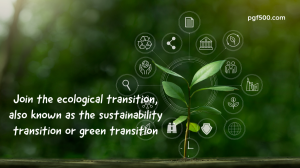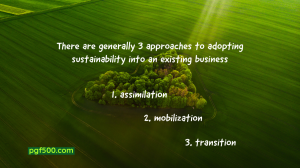How blockchain technology can support the race to net zero | World Economic Forum
.
-
Developing the capacity to deliver net-zero over the next decade may be the most critical transition that humanity has ever needed to make.
-
Blockchain technology could be an essential and effective tool in the move to net-zero, particularly when it comes to the energy sector.
-
As environmental, social and economic regulation is brought into place, it is crucial that blockchain companies provide proper reporting on their impacts, and a new World Economic Forum report highlights the challenges and opportunities for achieving this.
..
.
We cannot manage what we do not measure. This is as true for understanding the effectiveness of technologies as it is for managing organizations. Maybe even more so. If we apply technologies to solve our most demanding challenges, such as climate change, we must anticipate and include methods of measurement. Without proactive measurement, we may fall short of our goals or, even worse, cause ancillary damage. We have the opportunity to develop proactive measurements now.
.
Developing the capacity to deliver net-zero over the next decade may be the most critical transition that humanity has ever needed to make. Many state that blockchain technology could be an essential and effective tool to improve the energy sector and trace energy intensity. However, we must be as thoughtful about the tools as we are about their potential outputs. Critically, the tools we use to address our net-zero issues should not add to our climate problems, nor can we ignore the unintended consequences of technology.
.
How do you measure the environmental impact of a technology?
.As we have seen recently, it is challenging to balance the overall impacts of a technical solution. Moving bitcoin mining rigs to reduce environmental impact may cause significant social or economic impacts by increasing the costs of electricity for those in nearby areas. All of these externalities are part of the larger climate calculation. And, it’s more important than ever that the crypto and larger innovation community agree to a shared set of measurement standards.
Measurement is critical to enabling technology to contribute to the world’s net-zero goals. Without a solid understanding of the impact a particular technology has, it is unlikely that effective adjustments can be made to improve environmental performance. For any measurement to be helpful across an industry, it must be comparable across different parts of that sector and the methodologies must be clear and transparent. Without these clear and transparent methodologies, we can’t make thoughtful decisions. And without thoughtful decisions, we fail to take action. Or we take actions that have consequences we have not considered as part of the decision-making process. Understanding how to take a unified approach that enables optimisation is critical.
.
Understanding blockchain’s environmental impact is crucial
.Blockchain and the solutions built on it can (and must) be modelled and compared to understand their impact on our environment, as well as their possible economic and social impacts. Even with the vast differences in blockchain infrastructures, the recent paper from our Sustainability Coalition illustrates that there is a way to construct these models to help guide our public policies and future innovation. And for this work, we are not starting from scratch. On the contrary, various protocols and others have put forward numerous energy measurement techniques that apply to current blockchain infrastructures.
.
Given these imperatives, it is encouraging to see the body of case studies and practical solutions (of which Zumo is one example) already emerging out of the memberships of alliances, such as the World Economic Forum Crypto Sustainability Coalition. They demonstrate the industry’s alertness to such challenges and its willingness to move forwards proactively and at pace. More such action will be required on the path ahead.
.
It’s time to agree standards
One critical aspect required from the crypto community is to agree on a commonly agreed-upon set of standards that enable different protocols to compare their overall environmental impact. Current efforts are primarily heterogeneous and do not allow for the results to be compared with one another. A shared standard will take this nascent industry closer in line with the rest of the ICT industry. The crypto community could contribute deep insights to the ICT industry by illustrating how to measure distributed and decentralised systems, which are becoming a critical part of the broader ICT industry, as well as blockchain solutions. The drive towards net-zero could start meaningful discussions between the ICT and crypto/blockchain communities.
With this in mind, our new report outlines some issues with establishing proper guidelines for measuring crypto projects’ economic, social and environmental impact in a balanced manner – a unified impact assessment. This enables crypto projects to optimise more effectively across the three arms of sustainability and deliver on the promise of the technology in a viable manner. As environmental, social and economic regulation is brought into place, it is crucial that blockchain companies can provide proper reporting on their impacts. We hope this report contributes to this vital discussion and can inspire other technology projects, even those outside the scope of blockchain.
.
How blockchain technology can support the race to net-zero
.
—







